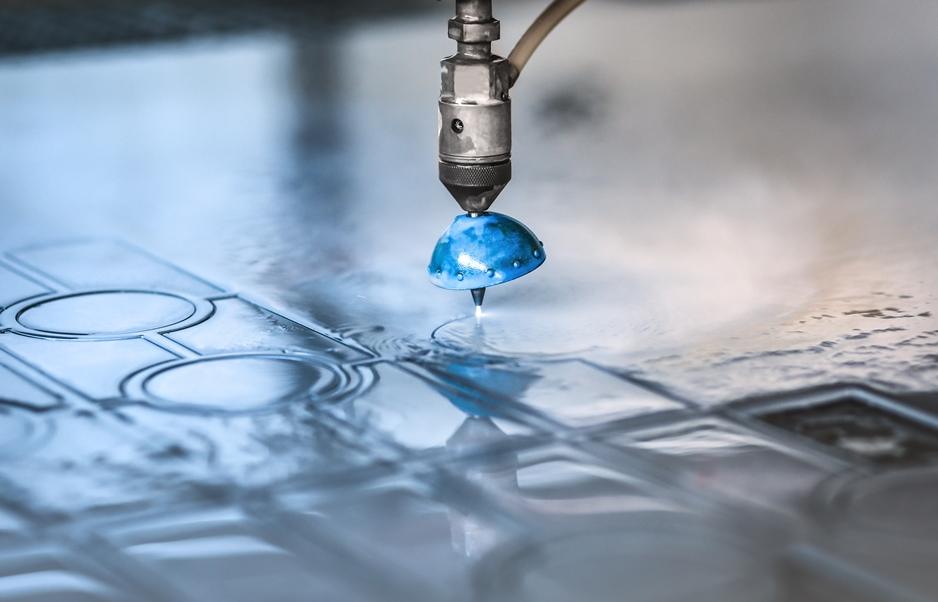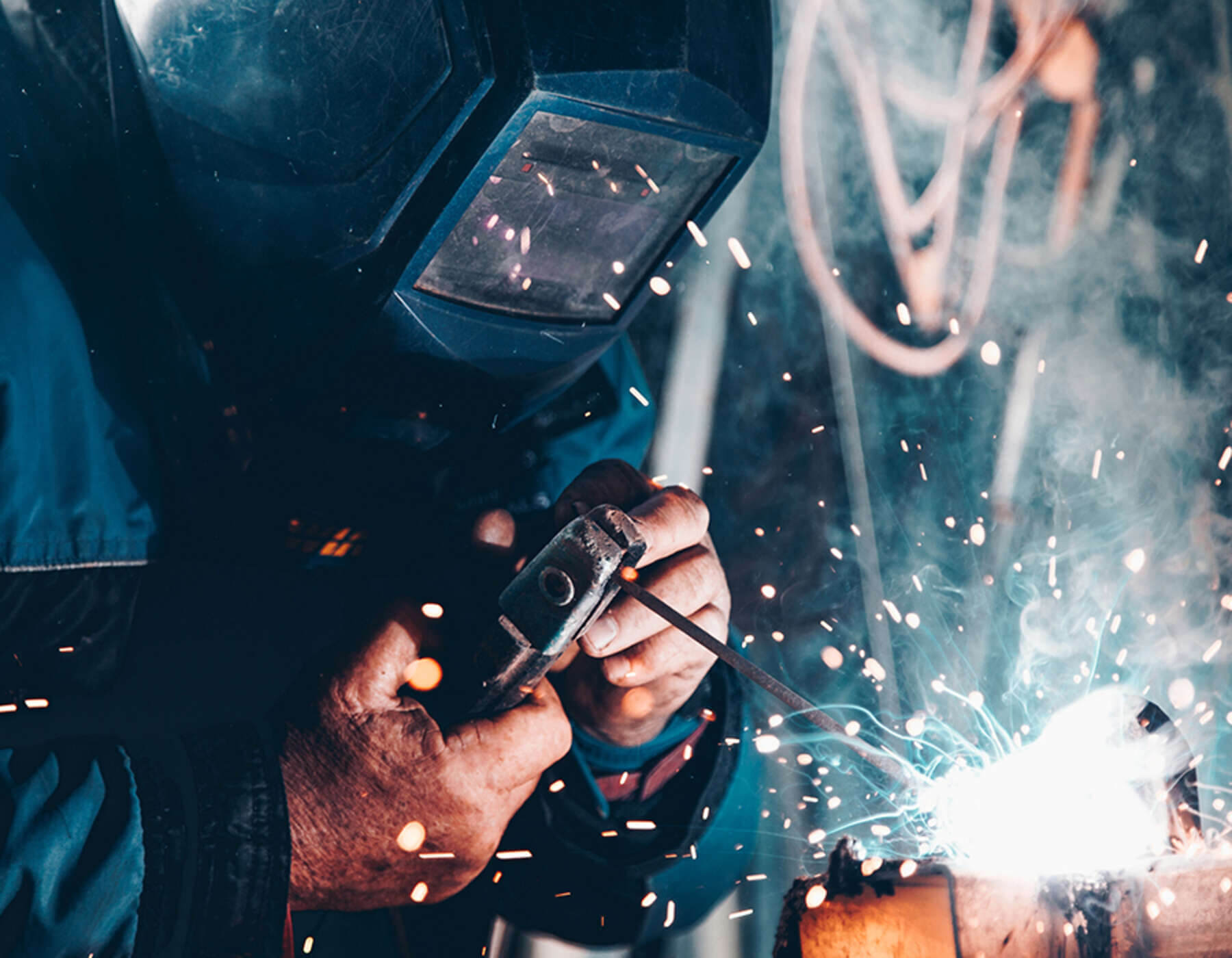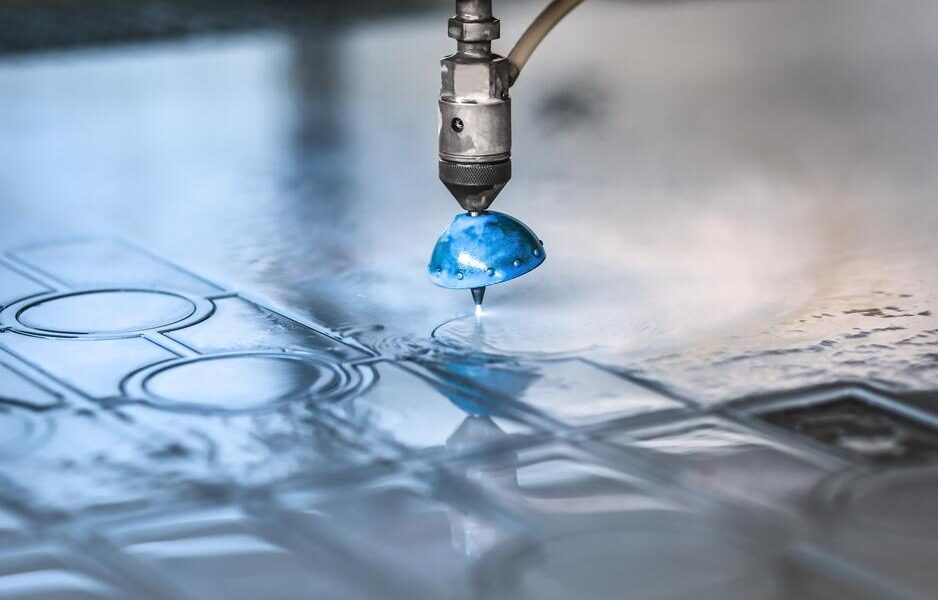
To transform sheet metal into intricate designs or component parts or to combine two materials, you will require a range of fabrication processes, including cutting.
Cutting sheet metal is not as simple as it sounds. Depending on material selection, size, and density, you must use a range of techniques and variations to ensure that you achieve the best and most accurate cut possible.
At Morfabrication, we pride ourselves on offering our customers a wide selection of fabrication services, allowing us to be your one-stop shop for all your project requirements.
To find out more and to see how we can help you with your next fabrication project, visit our page and request a callback from a member of our team—we’re always happy to help.
In this post, we take a look at the specifics of waterjet cutting, what it is, and the benefits and some of the drawbacks that it has to offer.
Waterjet cutting explained
By adjusting the variations on the waterjet equipment, you can cut a range of materials, such as:
- Stone
- Tiles
- Glass
- Metal
- Parts for aerospace and the automotive sector
- Composite elements
- And more.
It is a safe, cold-cutting process that can cut up to 304mm thick materials.
It can also use CNC technology to help improve efficiency, reduce costs, and improve production times.
How waterjet cutting works
The process of waterjet cutting, in its simplest form, involves highly pressurised water being fired through a nozzle pipe into a mixing chamber. Sand and particles are drawn into the stream (where appropriate), and the nozzle is fired at the material so that the cutting can occur.
The pressure and force of the water working alongside the particles erode the material at speed, with pressure ranges reaching as high as 100,000 psi.
This industrial machine ensures a powerful and versatile cutting process in fabrication, where abrasives can be mixed with water to increase the overall cutting power.
Of course, when working with softer materials, it is recommended that you use no abrasive mixer to still achieve an efficient cut. This pure waterjet technique is less invasive and ensures no additional pressure is placed on the material in question. Soft materials that this process is suitable for include foam, felt, wood, rubber, and thinner plastics.
For harder materials, it is recommended that you mix an abrasive with water. Some abrasives you can choose from include suspended grit, garnet, and aluminium oxide. This type of water and abrasive mix will allow for a precise and efficient cut on ceramics, metals, stone, and even thicker plastics.
Due to these intricacies and knowledge requirements, waterjet cutting should only be carried out by a professional sheet metal fabricator. This person cannot only perform the cut but also ensure that all equipment meets regulatory standards and guidelines.
If you would like to learn more about perforated sheet metal, its uses, and benefits, check out our latest post here.
Benefits of waterjet cutting
Versatile – this flexible process allows you to cut various materials of varying sizes without changing or adapting the machinery.
Superior burr-free edges—With waterjet cutting, you can easily achieve the smooth, uniform edges your design requires. Your sheet metal contractor will achieve this by adjusting water speed, pressure, nozzle size, and abrasive flow rate to get it just right. By achieving burr-free edges, you also reduce the need for secondary finishing, saving you time and money while improving efficiency.
Cost effective – waterjet cutting is a cold-cutting process, which means there is a lot less wastage (especially as we know heat can warp a lot of materials). There is also no need for secondary treatment or redefining of edges, saving on resources and cost, moving the sheet metal through the production line quickly and effectively.
Accurate cut – with waterjet cutting, you can achieve a good range of tolerances and an accurate cut of between +0.1 to +0.2mm, making this a suitable cutting process for artwork, custom pattern projects, unique and intricate designs, and more.
Good cutting range – with the ability to adjust various settings on the industrial machine, you can cut through a range of material thickness grades, cutting through materials such as aluminium, hardened steels, composites, and multi-layer materials.
Note: Waterjet cutting is not suitable for tempered glass, which will simply shatter if a waterjet is used.
Sheet metal fabricators near me
Waterjet cutting is often the preferred choice when you begin to consider the material thickness and edging quality. However, it is important to be aware that if speed is of the essence, laser cutting is still the better option.
For all of your fabrication needs and to answer your questions relating to which cutting process and technique is right for your project….
Sheet metal fabrication Newcastle experts are on hand to help.
Here at Morfabrication, we want to provide you with the right fabrication solutions to achieve the best outcome for your project.
We collaborate with you from the initial design and set-up stages through build and fabrication to delivery and installation.
To talk to us about your next metal works project contact us at 0191 816 2718 or email your requirements to info@morfabrication.com.

